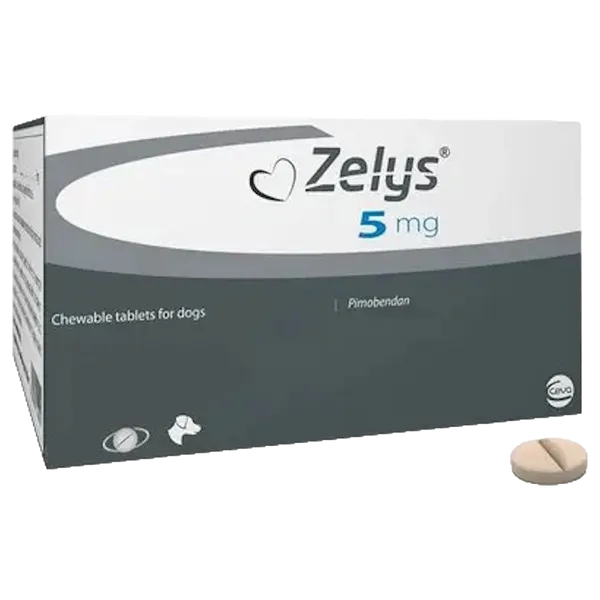Contraindications
- Do not use pimobendan in hypertrophic cardiomyopathies or in diseases in which an improvement in cardiac output cannot be achieved for functional or anatomical reasons (e.g. aortic stenosis).
- Since pimobendan is metabolised mainly via the liver, it should not be used in dogs with severe impairment of liver function.
Special precautions for use in animals
- The blood glucose should be tested regularly during treatment in dogs with existing diabetes mellitus.
- Monitoring of cardiac function and morphology is recommended in animals treated with pimobendan.
- The chewable tablets are flavoured. In order to avoid any accidental ingestion, store tablets out of reach of the animals.
Special precautions to be taken by the person administering the veterinary medicinal product to animals
- Accidental ingestion, especially by a child, may lead to the occurrence of tachycardia, orthostatic hypotension, flushing of the face and headaches.
- Unused part-tablets should be returned to the open blister space, or to the bottle and inserted back into the outer packaging. Keep in a safe place out of the sight and reach of children.
- Close bottle tightly with cap directly after removal of the required number of tablets or part-tablets.
- In case of accidental ingestion, seek medical advice immediately and show the package leaflet or the label to the physician.
- Wash hands after use.
Adverse reactions (frequency and seriousness)
In rare cases a slight positively chronotropic effect (rise in heart rate) and vomiting can occur. However, these effects are dose-dependent and can be avoided by reducing the dose. In rare cases transient diarrhoea, anorexia or lethargy have been observed. Although a relationship with pimobendan has not been clearly established, in very rare cases, signs of effects on primary haemostasis (petechiae on mucous membranes, subcutaneous haemorrhages) may be observed during treatment. These signs disappear when the treatment is withdrawn. In rare cases, an increase in mitral valve regurgitation has been observed during chronic pimobendan treatment in dogs with mitral valve disease.
The frequency of adverse reactions is defined using the following convention:
- very common (more than 1 in 10 animals treated displaying adverse reactions(s))
- common (more than 1 but less than 10 animals in 100 animals treated)
- uncommon (more than 1 but less than 10 animals in 1,000 animals treated)
- rare (more than 1 but less than 10 animals in 10,000 animals treated)
- very rare (less than 1 animal in 10,000 animals treated, including isolated reports).
Use during pregnancy, lactation or lay
Laboratory studies in rats and rabbits have not produced any evidence of teratogenic or foetotoxic effects. However, these studies have shown evidence of maternotoxic and embryotoxic effects at high doses, and have also shown that pimobendan is excreted into milk. The safety of the product has not been assessed in pregnant or nursing bitches. Use only according to the benefit/risk assessment by the responsible veterinarian.
Interaction with other medicinal products and other forms of interaction
In pharmacological studies no interaction between the cardiac glycosides strophanthin and pimobendan was observed. The pimobendan-induced increase in cardiac contractility is attenuated by the calcium antagonists verapamil and diltiazem and by the β-antagonist propranolol.
Overdose (symptoms, emergency procedures, antidotes), if necessary
In the case of overdose, a positive chronotropic effect, vomiting, apathy, ataxia, heart murmurs or hypotension may occur. In this situation, the dosage should be reduced and appropriate symptomatic treatment should be initiated. In prolonged exposure (6 months) of healthy beagle dogs at 3 and 5 times the recommended dose, mitral valve thickening and left ventricular hypertrophy were observed in some dogs. These changes are of pharmacodynamic origin.

